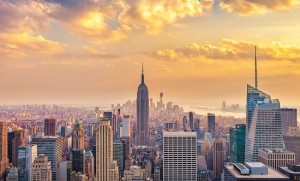Birds are a vast class of animals that can be found in a variety of habitats around the world. One environment many reside in is also home to thousands of people; urban areas. As the world’s population climbs, so do the numbers and sizes of these urban areas. This results in high densities of people, manmade infrastructure, pollutants, and noise, while simultaneously destroying natural habitats. While some birds seem to have adjusted to city life, researchers Gagné, Sherman, Singh, and investigated what effects urban areas could be having on breeding bird populations as a whole and their diversity in urban areas.
The researchers’ goal was to conduct the first quantitative analysis of the effect of urban area human populations size on bird diversity. They hypothesized that the rise in human population size in urban areas is the main cause of regional habitat loss, fragmentation of species populations, and natural disturbances, and therefore has a negative impact on breeding bird species richness and abundance in these regions. They used data from the North American Breeding Bird Survey and the US census to investigate.
The Northern American Breeding Bird Survey (BBS) is a massive, long-term avian monitoring program that was initiated in 1966 out of mid-twentieth century concern about the increase of synthetic pesticide use and its affects on wildlife. Through participant involvement, the BBS tracks the status and trends of American bird populations by visual and auditory identification along established routes throughout the United States and Canada. The data provides an index of population sizes and diversity, and is used to estimate population trends and relative diversity. To conduct this study, the researchers selected 48 urban areas based on a number of qualifications; 1) it had at least one BBS route that had been monitored for at least four to six years between 2006 and 2011 overlapping its boundaries, 2) it had a minimum human population of 100,000 people within 7.77 km2, and 3) there were no larger urban areas within 80 km. They then measured the population densities, the age of each urban area, elevation, temperature and precipitation, as well as the total amount of emissions and total amount of each individual pollutant. In addition, they estimated the habitat loss, fragmentation, and disturbance intensity of each urban region based on the amount of manmade surface area, assuming that it would be inversely proportional to the amount of natural plant coverage.
After numerous statistical tests, the researchers found strong evidence that urban area human population size has a negative impact on bird species richness along BBS routes. They were able to further support this by the its positive correlation with habitat loss, fragmentation, and disturbance as indicated by the manmade surface cover and levels of air pollution. However, the researchers did find that older urban areas tended to have a higher plant species density, and by effect, greater avian diversity than newer cities.
This paper shed light on how urban environments are affecting bird species. While there is some hope that as cities get older, more bird diversity will return to urban areas, it is not enough to combat the steady rise of the human population. Increasing urban environments and the simultaneous destruction of natural habitats is decreasing the number of urban bird species and is beginning to homogenize the avifauna overall. This paper calls for city reform in order to protect the birds that live in these areas, and calls to prioritize conservation efforts in urban regions.
References: Gagné, Sara A., Sherman,, Peter A., Singh, Kunwar K., Meentemeyer, Ross K. “The effect of human population size on the breeding bird diversity of urban regions.” Biodiversity and Conservation. 2016. 25(4), 653-671. doi:10.1007/s10531-016-1080-3.
4Corners. “vue de New York.” March 2013. tripadvisor.com. Photography. April 13, 2016.
“Northern American Breeding Survey Home.” Northern American Breeding Survey. U.S. Department of the Interior, U.S. Geological Survey, Patuxent Wildlife Research Center. 31 October 2001. Web. 14 April 2016.

